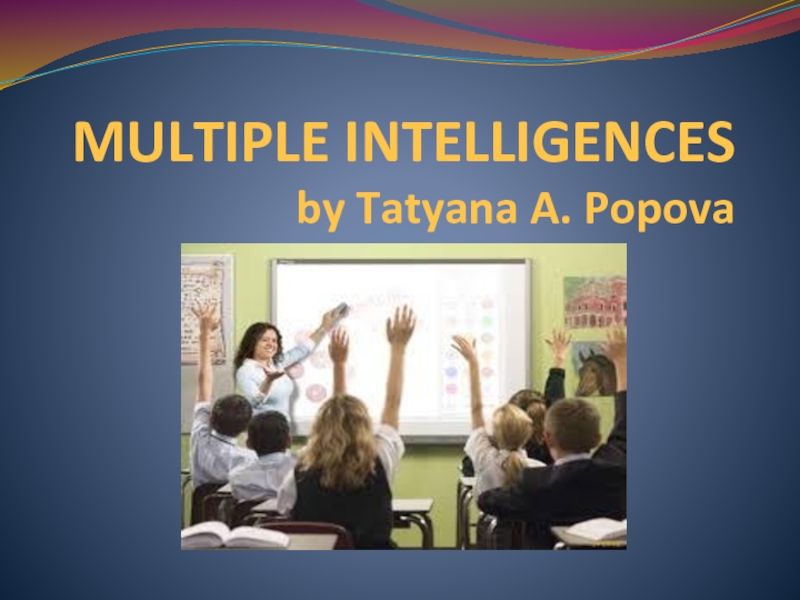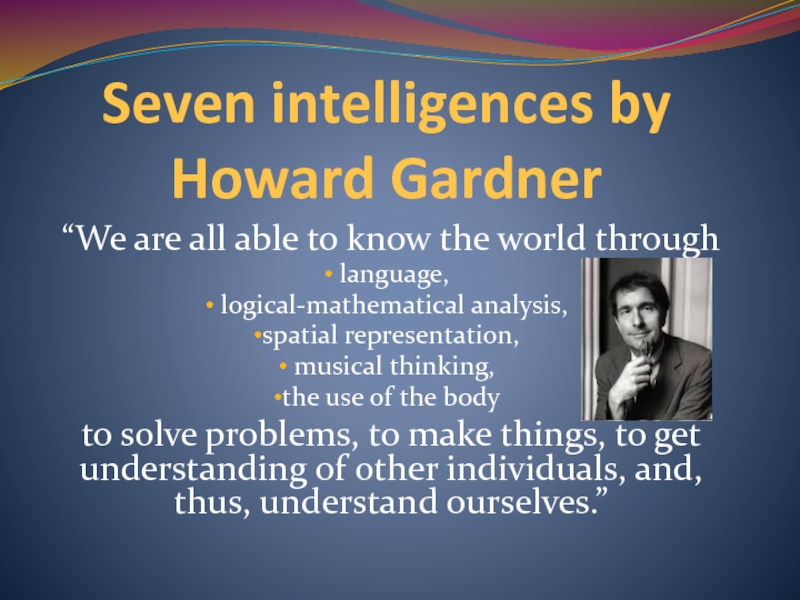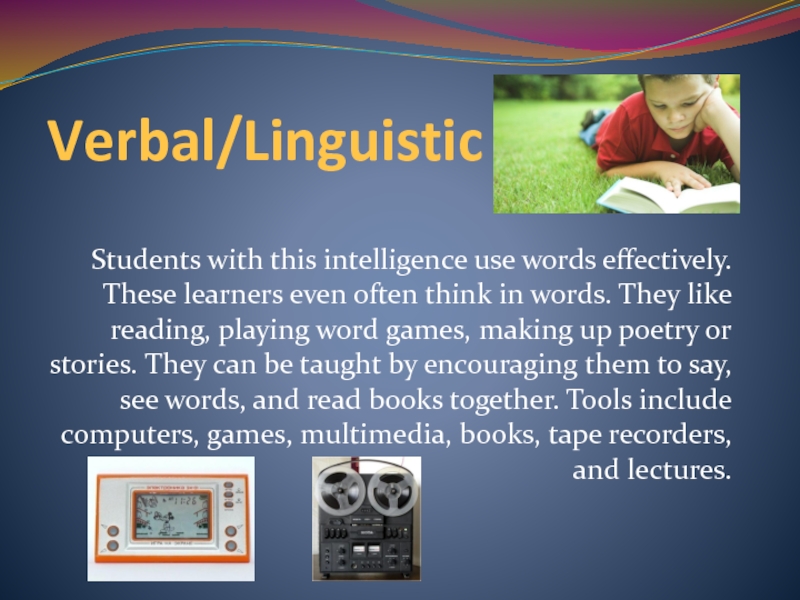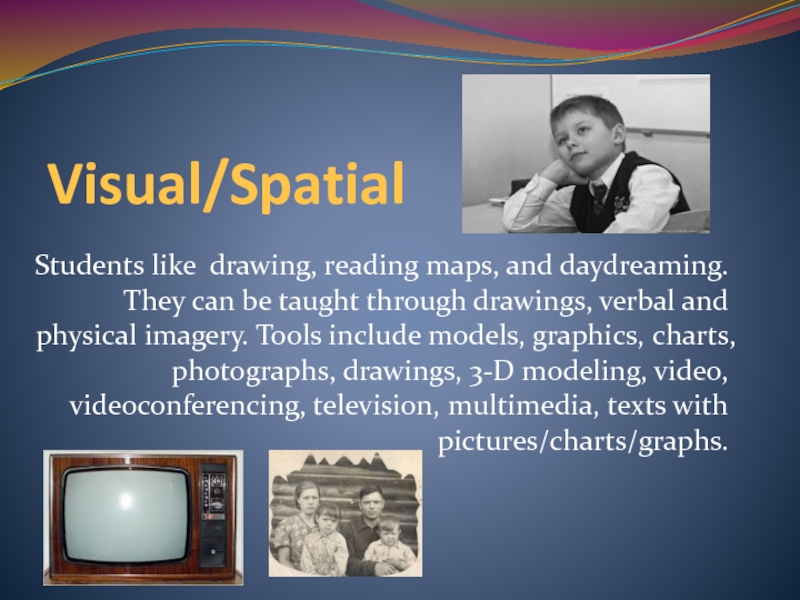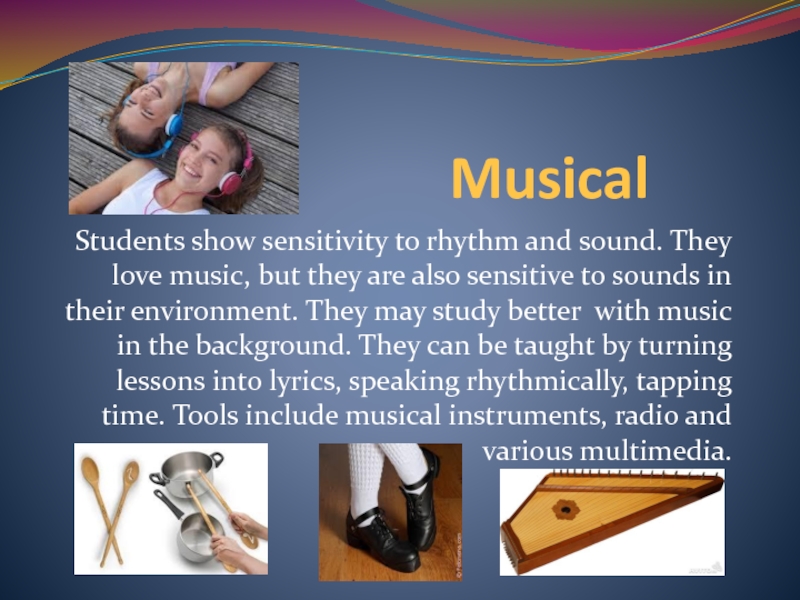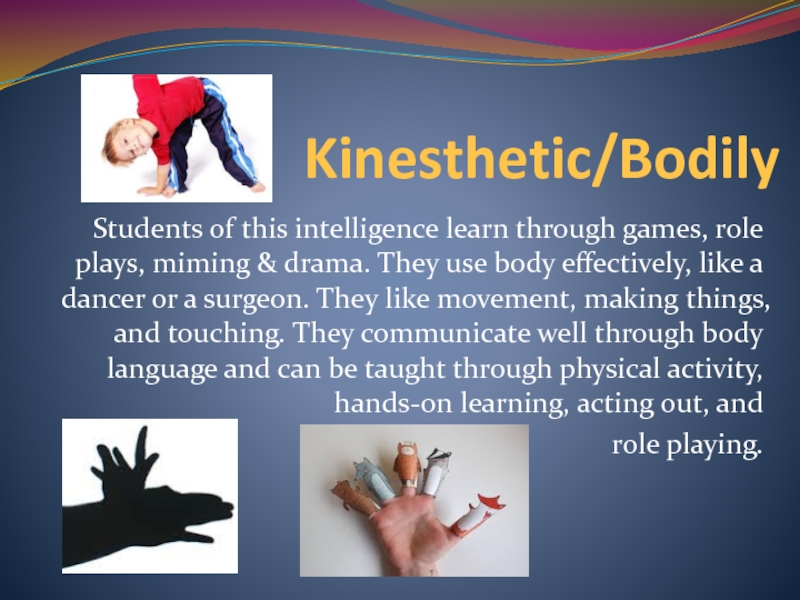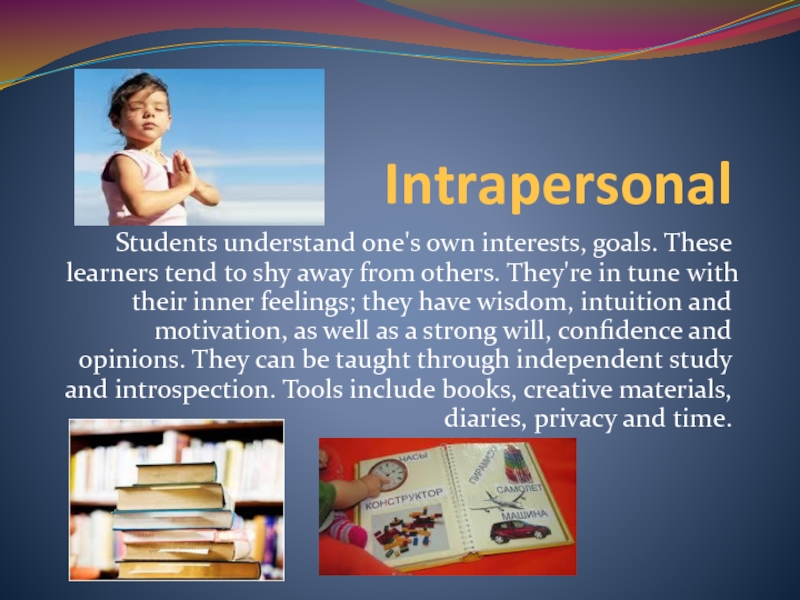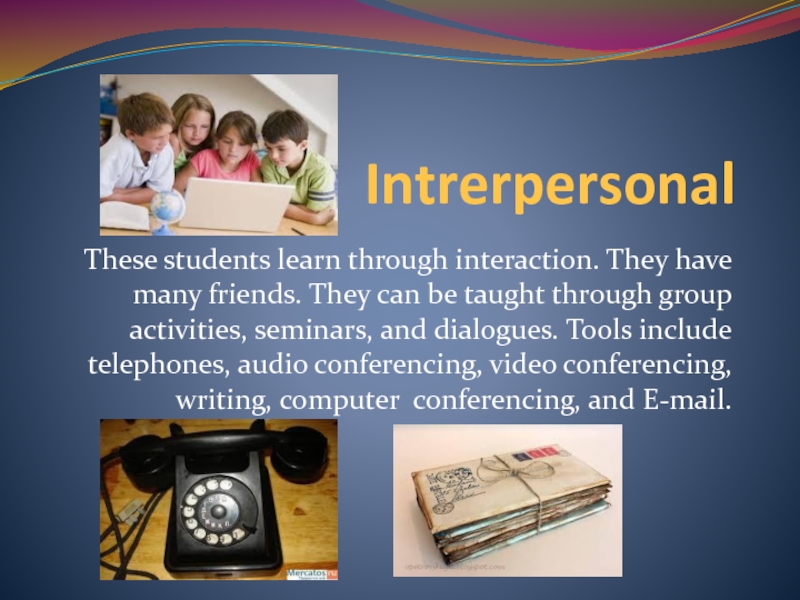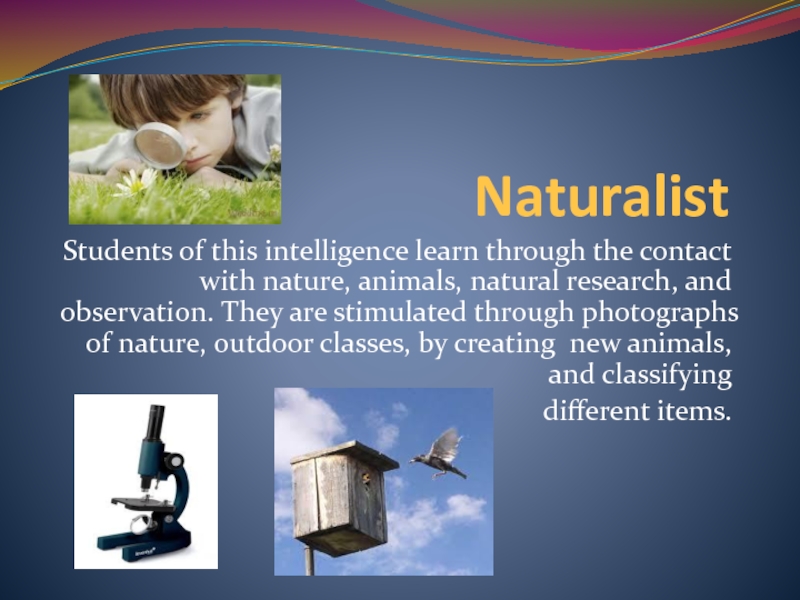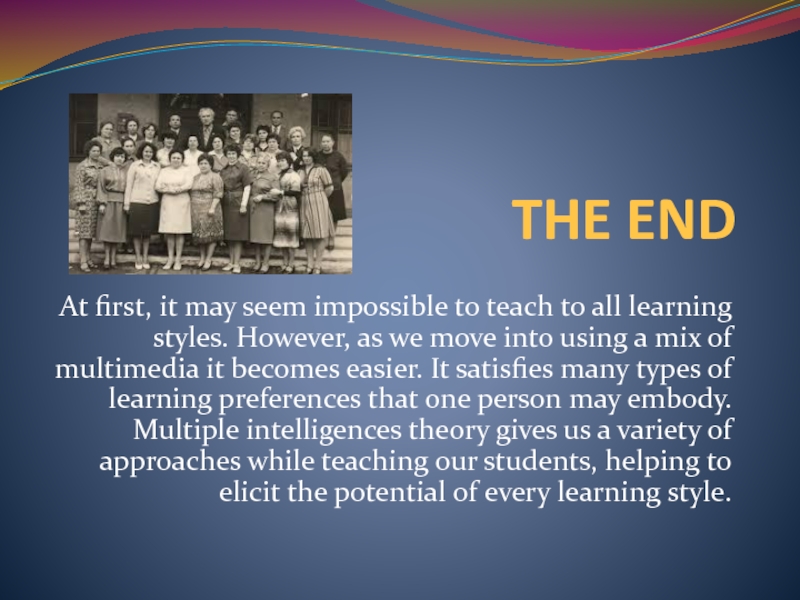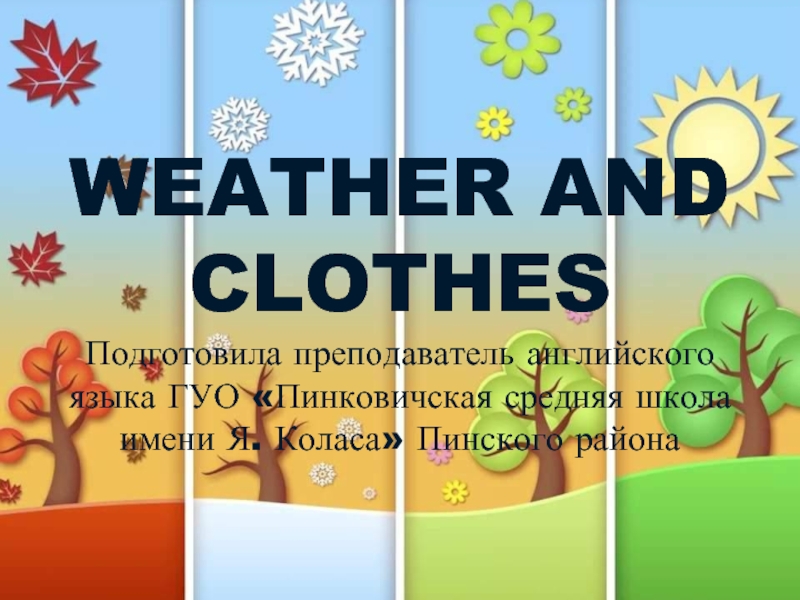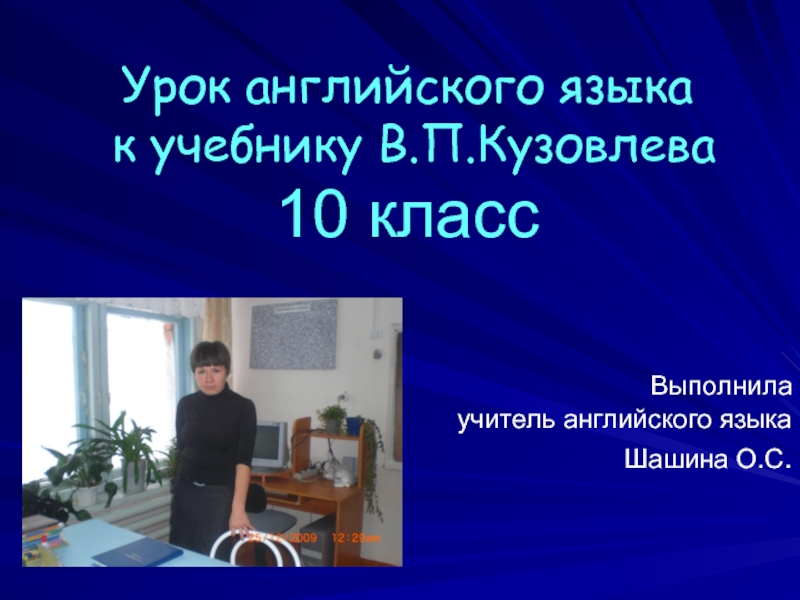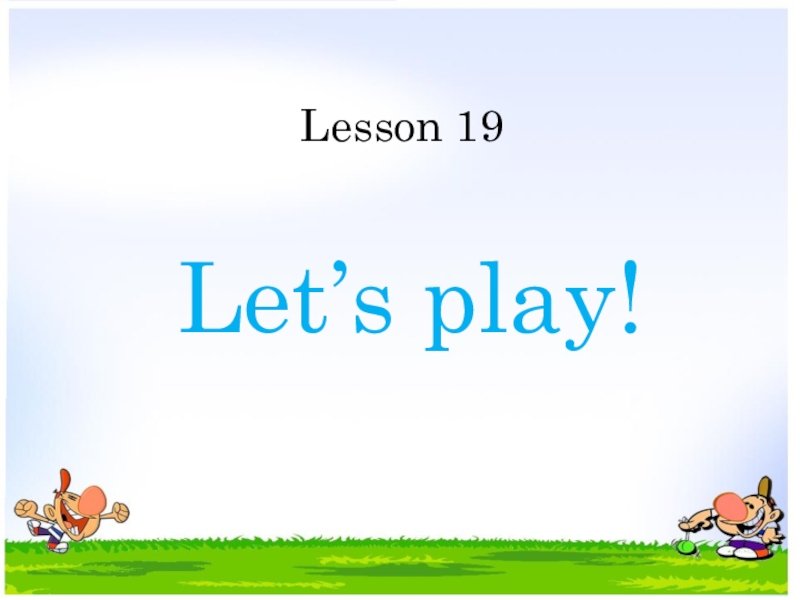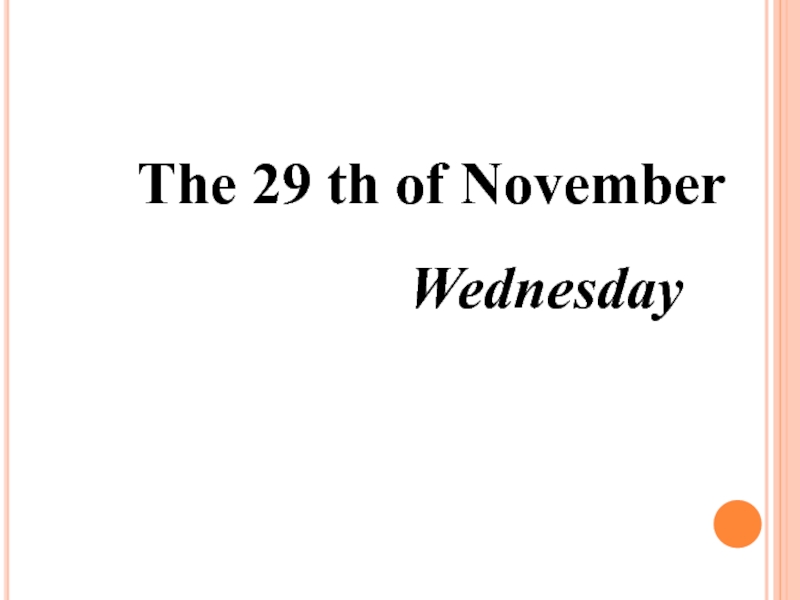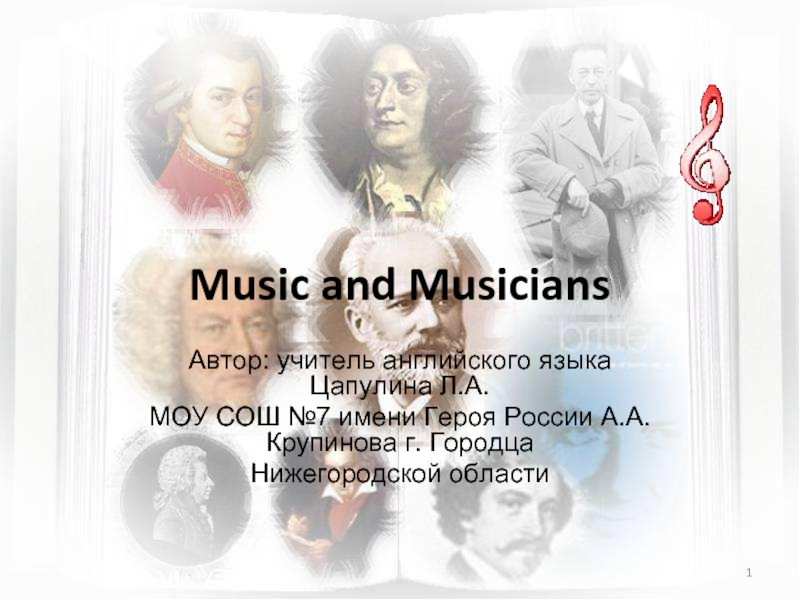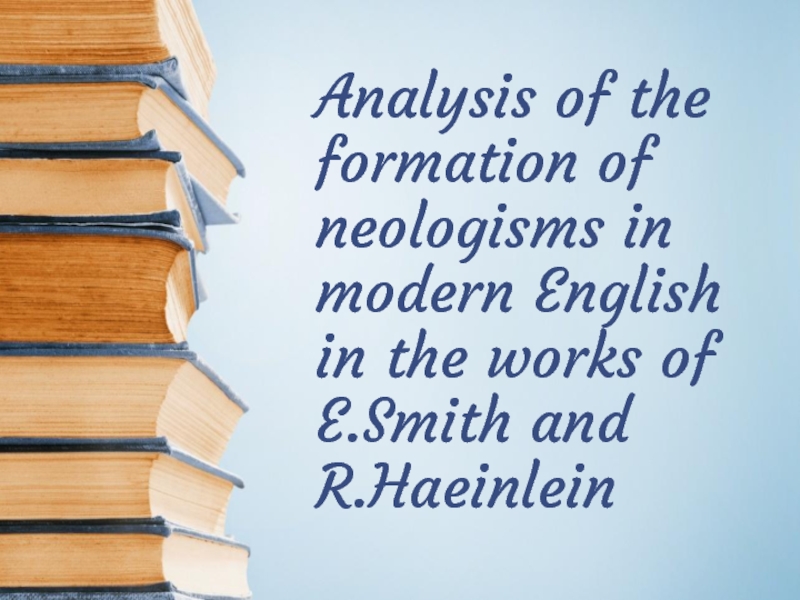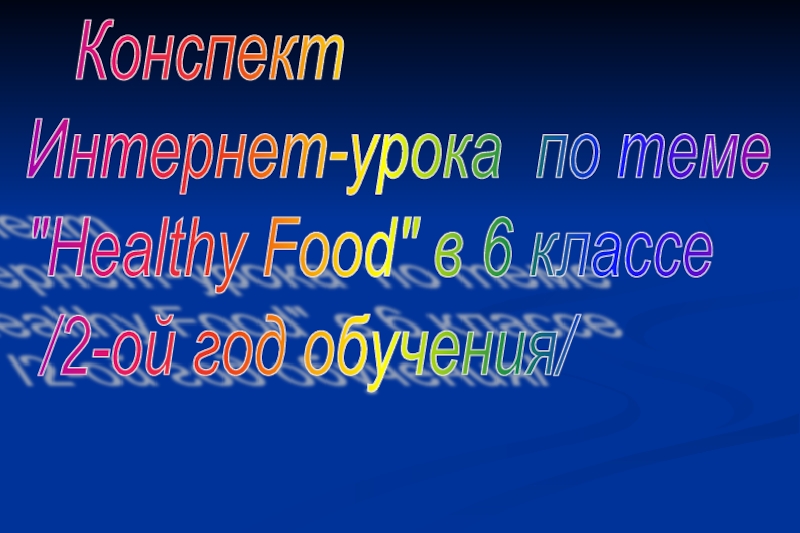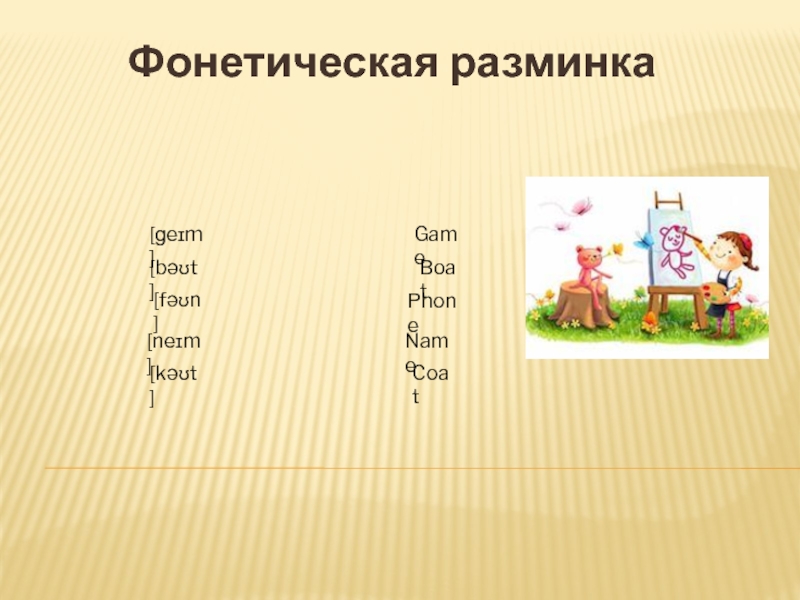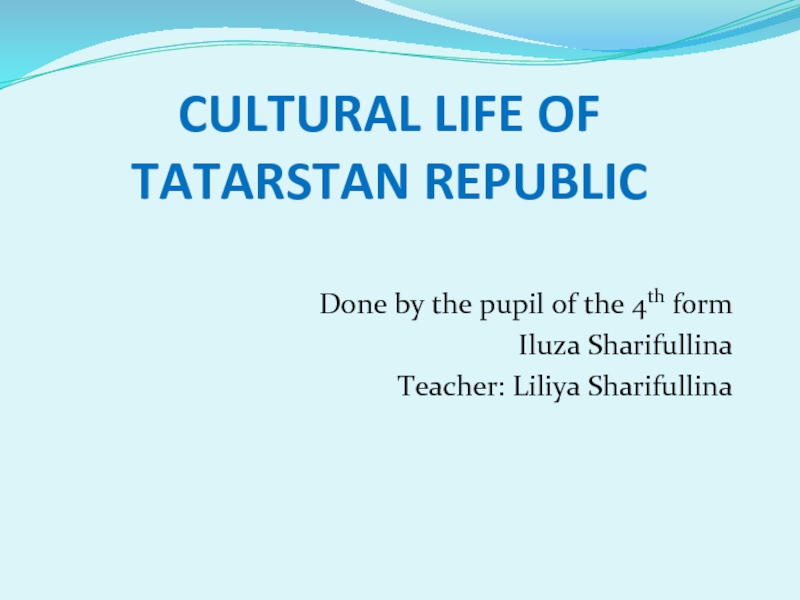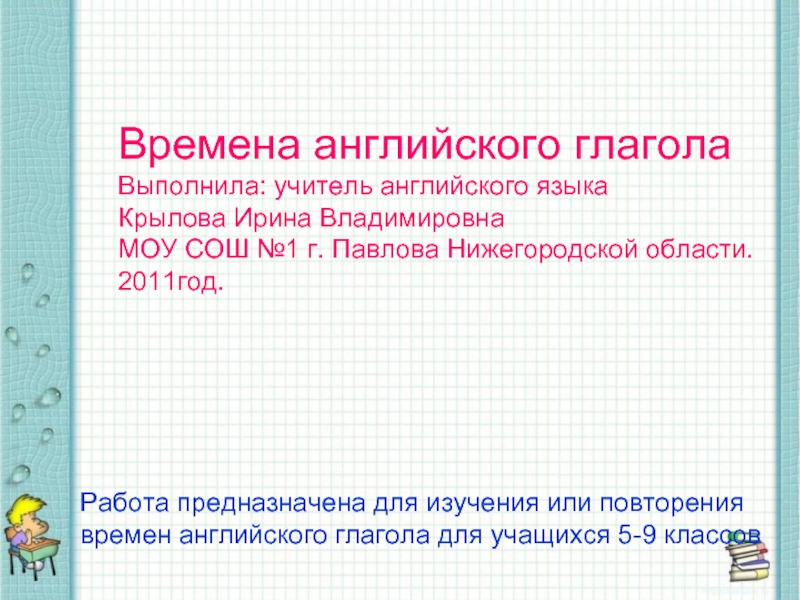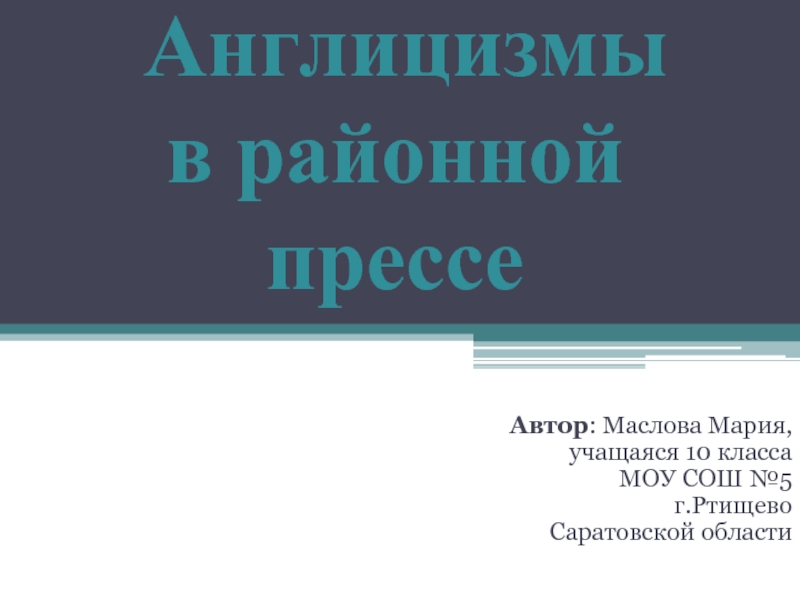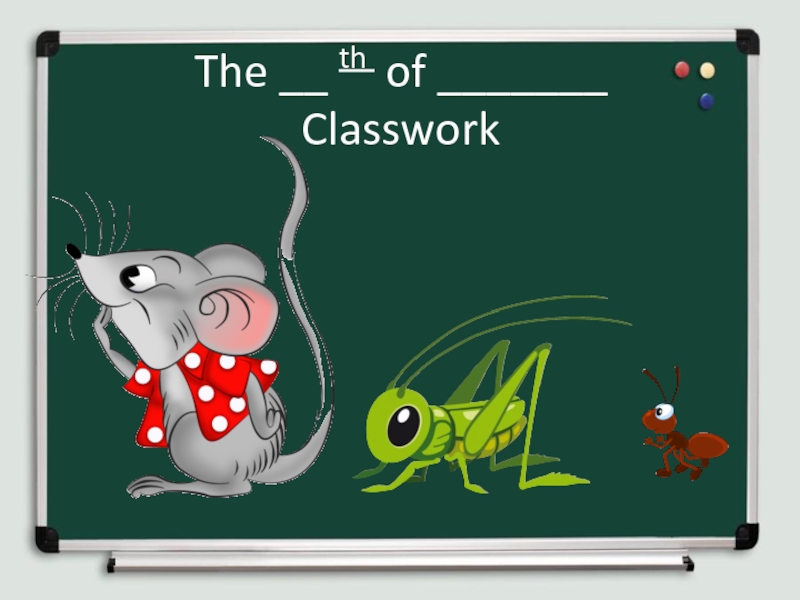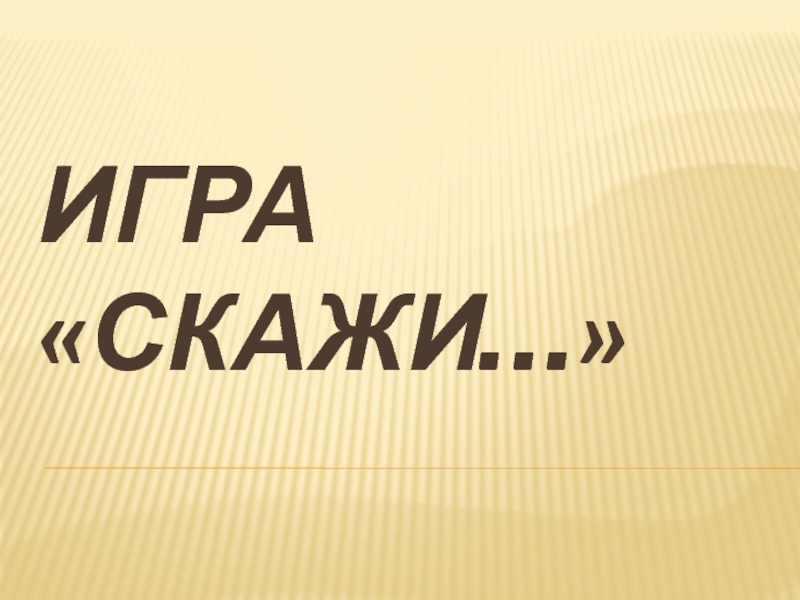Слайд 1MULTIPLE INTELLIGENCES
by Tatyana A. Popova
Слайд 2Seven intelligences by Howard Gardner
“We are all able to
know the world through
language,
logical-mathematical analysis,
spatial representation,
musical
thinking,
the use of the body
to solve problems, to make things, to get understanding of other individuals, and, thus, understand ourselves.”
Слайд 3So, how to reach our students?
Individuals differ
in the strength
of these intelligences
in the ways they are invoked
in the ways they are combined
to carry out different tasks, solve diverse problems, and make progress .
Слайд 4Verbal/Linguistic
Students with this intelligence use words effectively. These learners even
often think in words. They like reading, playing word games,
making up poetry or stories. They can be taught by encouraging them to say, see words, and read books together. Tools include computers, games, multimedia, books, tape recorders, and lectures.
Слайд 5Visual/Spatial
Students like drawing, reading maps, and daydreaming. They can be
taught through drawings, verbal and physical imagery. Tools include models,
graphics, charts, photographs, drawings, 3-D modeling, video, videoconferencing, television, multimedia, texts with pictures/charts/graphs.
Слайд 6Musical
Students show sensitivity to rhythm and sound. They love music,
but they are also sensitive to sounds in their environment.
They may study better with music in the background. They can be taught by turning lessons into lyrics, speaking rhythmically, tapping time. Tools include musical instruments, radio and various multimedia.
Слайд 7Logical/
Mathematical
Students with this ability are generally successful with solving problems,
doing activities, puzzles, exercises, drills, describing events in chronological order,
formulas, maps and games. They like to experiment, to guess, and get information by questions. They can be taught through logic games, investigations, and mysteries.
Слайд 8Kinesthetic/Bodily
Students of this intelligence learn through games, role plays, miming
& drama. They use body effectively, like a dancer or
a surgeon. They like movement, making things, and touching. They communicate well through body language and can be taught through physical activity, hands-on learning, acting out, and
role playing.
Слайд 9Students understand one's own interests, goals. These learners tend to
shy away from others. They're in tune with their inner
feelings; they have wisdom, intuition and motivation, as well as a strong will, confidence and opinions. They can be taught through independent study and introspection. Tools include books, creative materials, diaries, privacy and time.
Intrapersonal
Слайд 10Intrerpersonal
These students learn through interaction. They have many friends. They
can be taught through group activities, seminars, and dialogues. Tools
include telephones, audio conferencing, video conferencing, writing, computer conferencing, and E-mail.
Слайд 11Naturalist
Students of this intelligence learn through the contact with nature,
animals, natural research, and observation. They are stimulated through photographs
of nature, outdoor classes, by creating new animals, and classifying
different items.
Слайд 12THE END
At first, it may seem impossible to teach to
all learning styles. However, as we move into using a
mix of multimedia it becomes easier. It satisfies many types of learning preferences that one person may embody. Multiple intelligences theory gives us a variety of approaches while teaching our students, helping to elicit the potential of every learning style.
